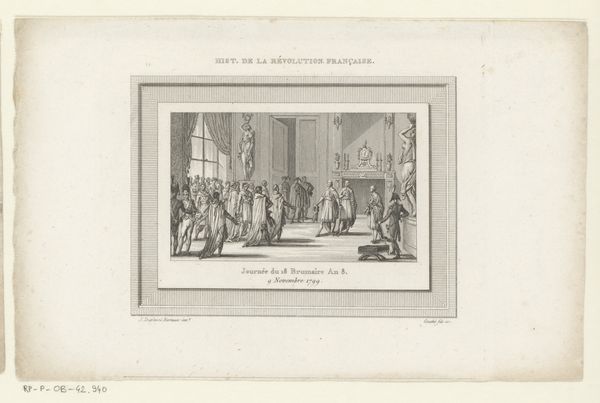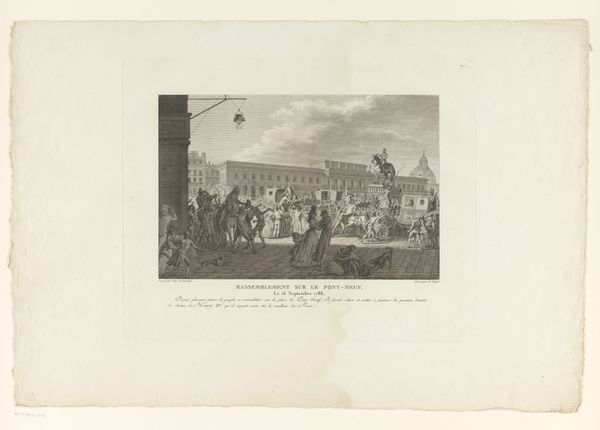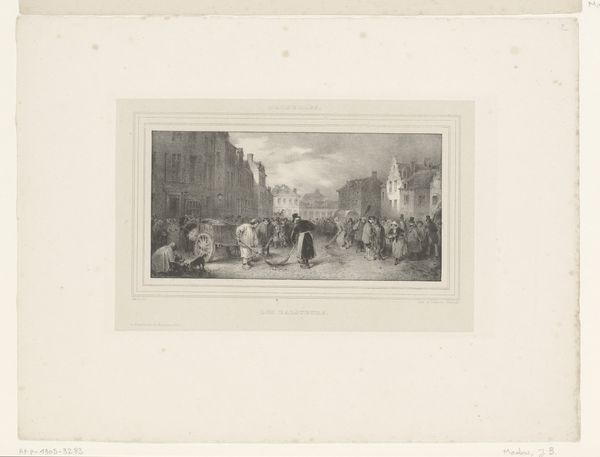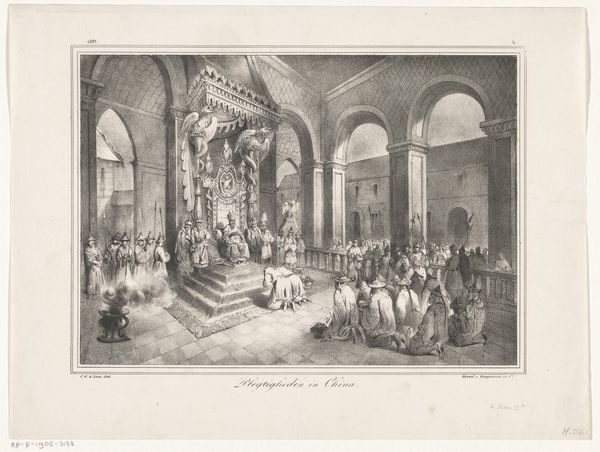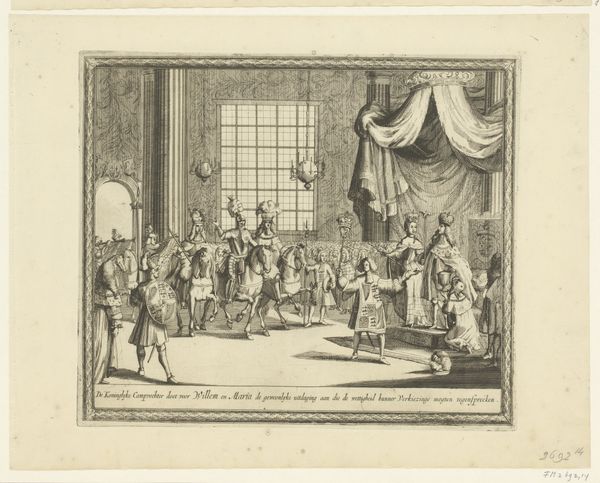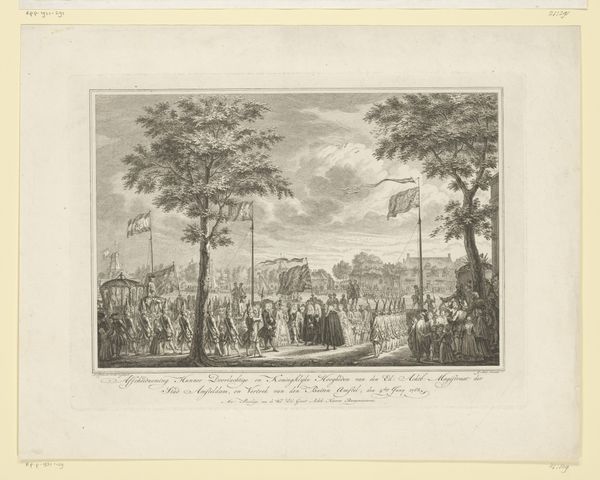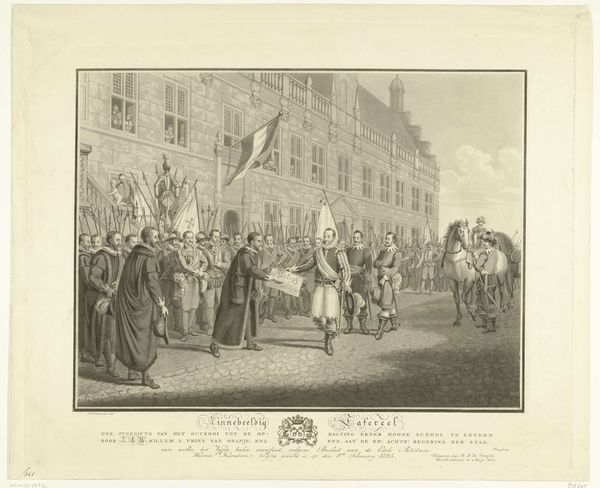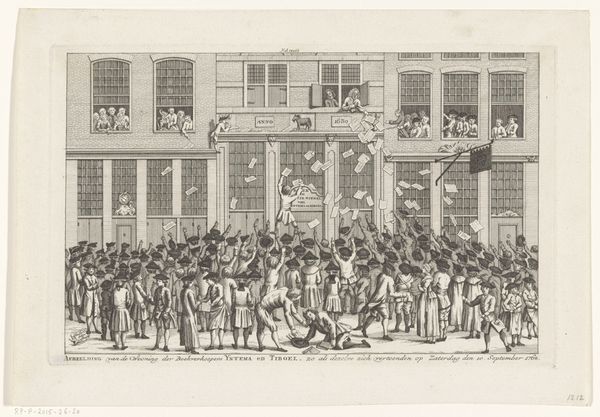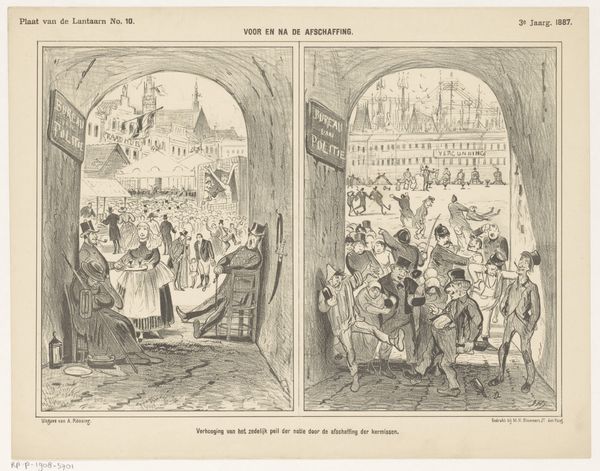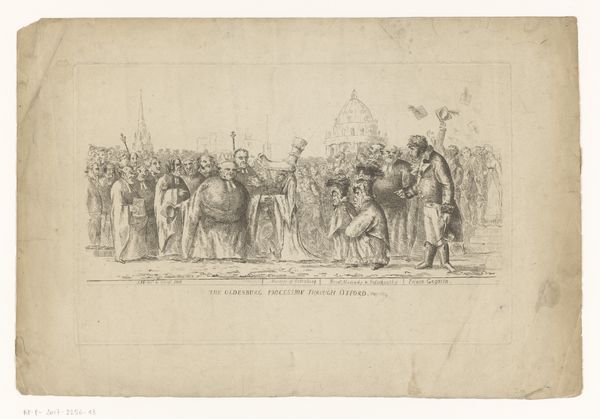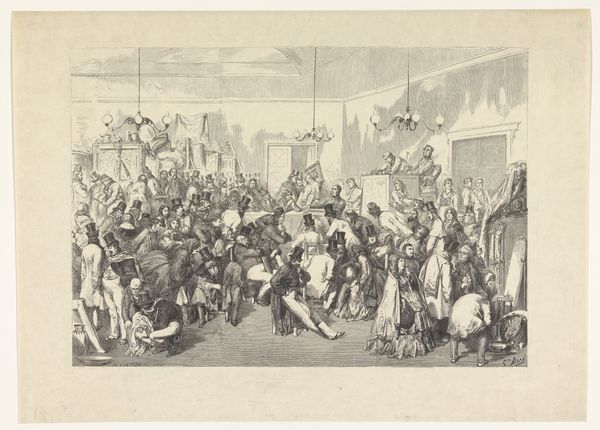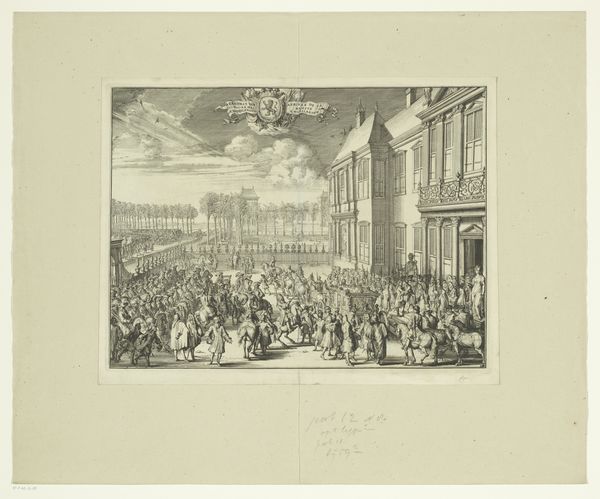
Koningin Victoria opent de Wereldtentoonstelling in het Crystal Palace in Londen 1851
0:00
0:00
print, engraving
# print
#
19th century
#
cityscape
#
history-painting
#
engraving
Dimensions: height 175 mm, width 255 mm
Copyright: Rijks Museum: Open Domain
Curator: This engraving, created in 1851 by Carel Christiaan Antony Last, depicts Queen Victoria opening the Great Exhibition at the Crystal Palace in London. Editor: My first impression is one of overwhelming, almost intimidating order. There's a hierarchy built into every line of this composition, even in its material—the rigid precision afforded by engraving seems perfectly suited to portray the era's social strata. Curator: Absolutely. The print reflects a very specific moment in British history, an apotheosis of the Industrial Revolution, celebrated and literally inaugurated by its monarch. The Crystal Palace itself was a testament to the possibilities of mass production. Editor: Speaking of which, I'm struck by how much labor isn’t represented. This image shows the grand result, the Queen's presence, but obscures the vast material processes and working bodies involved in constructing the Crystal Palace and all it contained. We see the polished outcome, not the grime of its making. Curator: That's a crucial point. The exhibition was very consciously projecting British industrial power and cultural dominance on a global stage. The carefully managed presentation—reflected so well in this print—served to bolster that image. Editor: And it’s interesting to consider the choice of engraving itself. Its reproducibility made it a fitting medium to disseminate this spectacle. Every copy extends the exhibition’s influence, bringing the aura of the event to those who couldn't attend, while also, effectively, obscuring all of the materials of manufacture and labour once again through mechanical means. Curator: Indeed, and look at how Last has positioned Victoria; she is at the heart of progress and empire, the linchpin of it all. Editor: To me, this piece isn't just documenting history, it's actively manufacturing it. It showcases power through carefully curated images and hides its costs with a clean, ordered surface, that is now ingrained through historical context, in all senses of the word. Curator: Seeing it this way truly underscores the print’s function as propaganda, shaping public memory of the era. Editor: Analyzing it by means of the social context, really shows the means of production which brings the historical narrative to life.
Comments
No comments
Be the first to comment and join the conversation on the ultimate creative platform.
